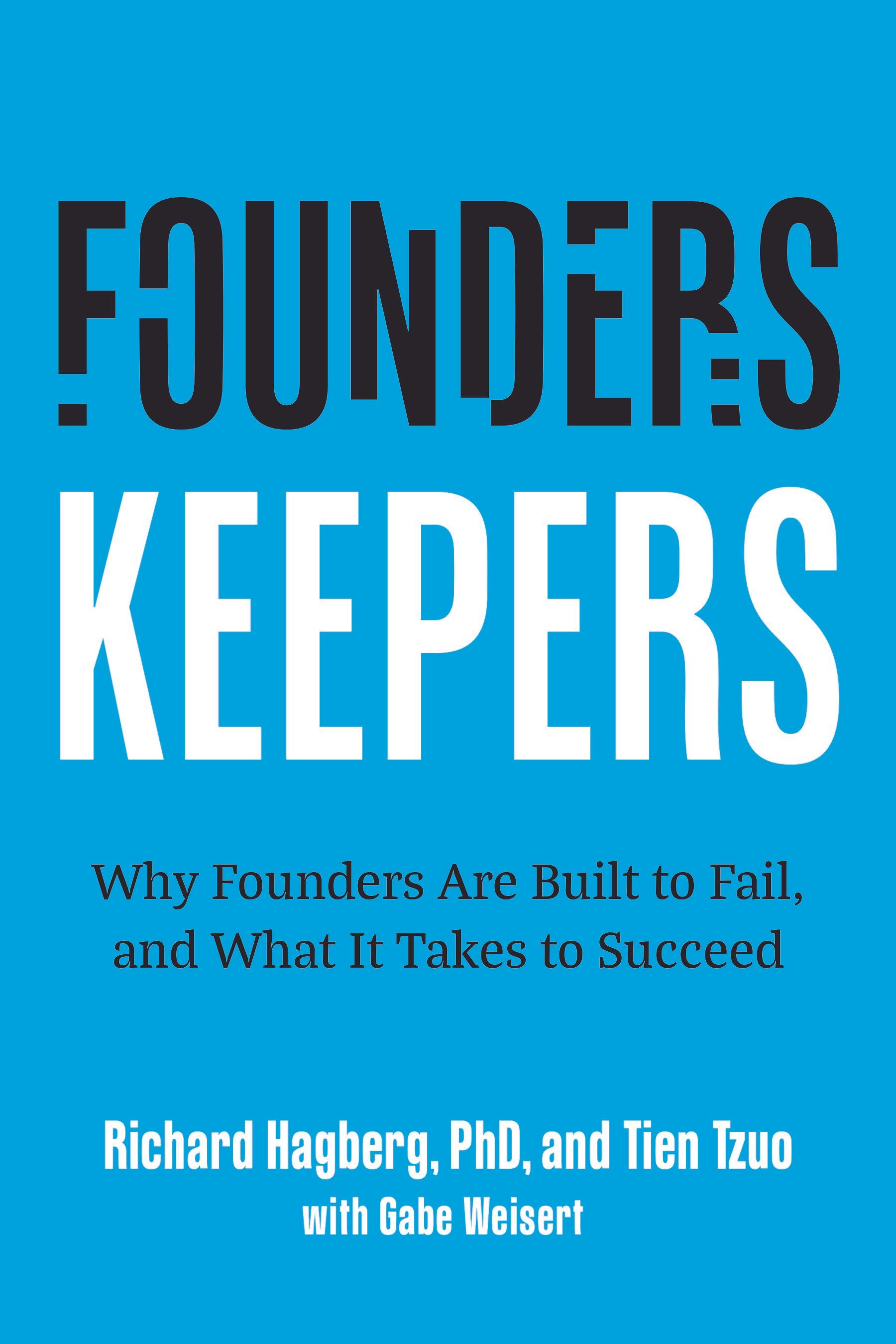Article
Creating Buy-in

Getting Buy-in For Your Initiatives
Creating Buy-In
There’s a common understanding that executives are hired to make decisions. True enough. But they are also hired to insure that the decisions are implemented. Coming to a decision – choosing a direction, formulating a strategy or deciding on an action plan – is difficult enough in these complex times. Getting people to buy in – to understand, accept, and align behind the plan - is another matter.
Nobody creates a successful business alone
No matter how brilliant or visionary you are, how innovative your ideas or your product, you need other people to help you transform your vision into reality. Leaders get results by working through others.
You need cooperation and support for your initiatives from investors, employees, and other stakeholders if you are to lead successfully and accomplish your goals.
The authoritarian leadership style is a dinosaur
We no longer live in a world where the person at the top can dictate terms to followers and employees and automatically get his or her way. It doesn’t work like that. Leaders on every level operate in a complex web of relationships and inter-relationships. They have to work with people who have differing agendas, viewpoints, and leadership styles, and need to find ways of working together to achieve common goals.
So you need to create buy-in
One of the ongoing challenges you will face as a leader is creating buy-in – getting the people whose support you need as fired-up as you are about what you are creating together. People who take on your vision as their own, who will enthusiastically put in the hours and the focus because they believe in you and your objectives and truly want to see your idea come to life. The more your agenda becomes theirs, something they want to achieve because they believe in it, the better your chances of success.
How will you do it?
This will not happen by itself. How will you light the fire that will make people passionate about building the organization needed to realize your dream? How will you enlist the cooperation of those who are not passionate, but whom you need on your side?
And how will you avoid the pitfalls that get in the way?
Here are some ideas that are relevant both for specific projects that you want to pursue, and for the overall success of your organization.
Steps to create buy-in:
Determine what you want
Creating buy-in first requires knowing what you want (your goals, priorities, and needed resources). So, before trying to present your idea or suggest an action, it’s important to carefully think through your proposal. Ask yourself:
- What is most important to you in this situation?
- What is your primary goal or core agenda?
- What do you need others to agree to or support, both immediately and in the future?
- What actions or changes do you want to see?
Determine what you can give up
- Differentiate between your “A” priorities and your “B” and “C” priorities.
- What are you willing to give or trade to get what is most important to you?
- Be clear about the relative importance of getting the current task accomplished or initiative supported, versus maintaining or building a long-term relationship with those you are trying to influence.
Prepare the ground – do your homework
If you need an individual or group to buy in to your idea or initiative, set up a meeting and prepare for it carefully. Don’t impulsively jump into action before you have your plan thought through.
Know what you want to achieve.
- Get clear what points you want to make, and how you want to state them.
- Make whatever notes you may need so you can give a thorough, cogent, and persuasive presentation.
- Get your facts straight and know the details.
- Do your homework so that your argument has credibility. This is how you want people to see you: “She is so knowledgeable that her ideas and proposals have immediate credibility.”
Anticipate the opposition
Before you meet, make a list of all the people your proposal will affect. Talk to key players to find out how they think and what they want:
- What are their concerns, agendas, and motivations?
- What do they care about the most?
- How are they likely to react to your proposal?
- Try to anticipate likely disagreements or any opposing views you may face. Adjust your presentation accordingly.
Try to understand the person or persons you want to influence
One factor that inexperienced leaders – and some who should know better – often fail to take seriously is learning all they can about the people they wish to influence. It’s a common, and very natural mistake to feel that your vision, your personal persuasive powers, and your position authority should be enough to bring others into alignment with what you want. But it isn’t.
Before you aim directly for buy-in, try to understand the situation from the point of view of the people you’ll be addressing. When you talk to them, explain your ideas but be in a listening mode. Pay attention to what they say, and adapt your approach based on what you learn they want and what the forces are that are acting on them. If you understand their world and have a bit of empathy for what they are facing, you will be more likely to see them as allies rather than as the evil opposition.
Clarify what you have to offer in exchange
The unspoken question people will almost always have when considering whether to buy in to someone else’s initiative is, “What’s in it for me?” So before you try to influence and persuade, it’s important to clarify not just what you want, but what you have to offer. What can you trade for something they want or need? Important: This is likely to be different for each stakeholder, so you need to get to know your people. It’s not always about money.
Here are some things people value:
- Meaning: Being involved in a project that has broader meaning and significance
- Challenge: The chance to work on a demanding, stimulating project or problem
- Money: Making more of it
- Growth: Expanding their territory of influence or their level of responsibility
- Learning something that is useful to their career advancement
- Acknowledgement or praise for their accomplishments, competence, or knowledge
- Being listened to – feeling that their ideas and contributions are appreciated
- Getting support for a pet project in the form of financial or other resources such as staff, equipment, or office space
- Greater visibility in the organization, profession, or industry
- The opportunity to work with a person they admire or respect
- Receiving coaching or mentoring
- Feeling that they are a valued part of a group or team
Action Plan for Creating Buy-In:
Build consensus with key people
Identify the stakeholders whose buy-in you most need, whose input may influence or even change your approach or your course of action. That usually means all of your direct reports and your peers, and if you're the CEO, your board members.
Talk with them, and listen to what they have to say. You want key players to get behind you, but the process of persuading almost always involves listening to their concerns before you try to convince them of your rationale. They may have insights you don't have or concerns you don’t know about until you reach out to them.
Note: Pretending to listen – going through the motions with no intention to take the other’s ideas seriously – is not listening. Most people can spot a phony.
Line up your support
In their book, Influence Without Authority, educators and consultants Allan R. Cohen and David L. Bradford suggest that you consider starting with
- People you know or are pretty sure are supportive. “Early wins help.”
- People whose support will bring others along with them.
- People whose expertise can improve your case.
- People who are likely to oppose you if you do not incorporate their demands.
Connect with employees and direct reports
Ultimately, you want buy-in from everyone, not just critical stakeholders. Depending upon the size of the company you may or may not have sufficient time to establish relationships with everyone, but do the best you can.
Easy ways to create rapport and build support
Preferably before you need people to support an initiative:
- Invite people for a one-on-one, perhaps for coffee or to share an informal lunch.
- Pause at somebody's work area and ask what they're working on, what is exciting to them, and what frustrates them. Ask: “How can I help? What do you need?”
- If they are new in town – perhaps they’ve moved in order to work with you and your team - ask if they are comfortably settled, and how partners or family members are.
- Take a minute to find common ground in personal interests – sports teams, music, etc. – and share your enthusiasm. “Did you see the game last night?” “Have you heard the new song?”
It doesn’t take a lot of time to show interest or say a kind word. Fostering positive, trusting relationships is an investment in creating buy-in.
On the other hand, if you only show up when you want something they will quickly get onto it, and their trust level will be damaged.
Influence, don’t push
The tendency among entrepreneurs is to focus almost exclusively on pushing their idea. But forcing things tends to create resistance. Creating buy-in is ultimately about influencing others, not making demands on them. It may require a little time to truly listen and take others’ concerns into consideration, but if you need to build support to get something done, or must work collaboratively with others over the long haul, it’s worth the investment.
Involve people in decision making
An effective way of creating buy-in with your team is to involve them in problem-solving and decision-making. Not every decision or problem requires consensus but involving people in problem solving, whether it's gathering relevant facts or getting suggestions for potential actions or approaches, is very useful. People love to feel that their opinions and insights are valued, i.e., that they are respected members of the team.
Keep people in the loop
Explain your decisions and share the rationale for your conclusions or actions. This helps people understand how you think about problems and empowers them to develop capability for independent decision-making. The more they can do that, the more you can trust them and the less you will feel the need to micromanage.
Inspiration generates buy-in
People need to know where the leader is leading them, and they need to feel that the destination is meaningful and attainable. Visionary Evangelists have a natural gift for painting a verbal and conceptual picture of their vision, delivered with enthusiasm, that draws people to want to follow their lead and makes them feel, “We can do this!”
Share your vision and keep it fresh
You have the big picture, and at least a partially developed long-term strategy, and you know what you need to have happen as you go forward. Your employees do not have this vision or understanding, unless you share it with them. One of the most powerful ways to generate buy-in is to paint that big picture, and repeatedly remind them of where you are going as an organization and how they can help.
Create an atmosphere of openness, not fear
If a leader is autocratic and intimidates or bullies people, it fosters the development of a culture of yes-men. Then you’ll never know what people are thinking, or what is really going on in your organization. If you want to elicit people’s best thinking and most committed action, you need to allow others’ voices to be heard. Create an atmosphere where people will bring forward their ideas. They will do that, if they believe you are really listening.
Try to take time for your people even when you feel you don’t have an y
A critical factor facing the entrepreneur that others may be blissfully unaware of is the sense of urgency he or she likely feels because funding is limited, the fuses are burning, and the runway is getting shorter. With this kind of pressure – with so much to accomplish in a short time frame – it feels impossible to take time soliciting people’s opinions and building support. Try to do it anyway.
Apologize if you screw up
If you snap at someone because of the pressure, apologize as soon as you can. “I’m sorry, the time crunch is getting to me. You didn’t deserve that. You’re doing a great job.” This will go a long way to soothe hurt feelings and build a stronger relationship with your team.
Model the values you expect others to follow
Creating buy-in starts with the first people you hire, and continues through all phases of the organization’s growth. You need to be sure that all the individuals are in alignment with the values and goals of your company. You can’t expect this to happen unless you make those goals and values clear, explain why they are important, and demonstrate them in your own behavior and relationships.
People will buy in to the project or plan if they trust the leader’s sincerity and are convinced he or she has the right people, resources, expertise, and managerial skill to bring the vision to life.
Integrity counts
People are naturally drawn to support and get behind a leader of integrity, who is trustworthy and respected. If a leader intentionally misleads people, chances are very strong that the truth will eventually come out, and from then on, trust and credibility will be damaged and the leader’s ability to get people to buy in will be undermined. Not being truthful and transparent, taking the easy way out of a difficult situation, may seem expedient in the moment, but this behavior ultimately amounts to self-sabotage.
People are not just “resources”
Many entrepreneurs are lacking in social awareness and may not consider the needs of others when they make decisions, or the impact their decisions will have on people. They see their employees as means to an end, as “resources,” they see them as part of a numbers calculation, but not as people. This may work for a little while, but it will fail in the long run.
Followers will be much more likely to buy in to the goals you set for the organization if they feel you are committed to their personal growth and advancement.
Be sure employees and team members are buying in from the get-go
Generating commitment and dedication will be an ongoing challenge for you as your organization evolves, new initiatives are on the table, and new people start appearing. It begins with finding, hiring, and inspiring the right people. For a startup it will be up to the entrepreneur, the one with the vision and passion, to craft a core leadership team whose members are not only expert in their area, but who share the vision and are on board with the goals and values that drive the company.
As you expand and need to take on more people, ask yourself:
- Do they care about the company’s mission?
- Do they understand the exceptionally hard work and long hours that will be required?
- Do they see value in what the organization wants to create in the world?
You need to hear unambiguous Yes’s to these questions!
Obstacles to Creating Buy-in:
Communication Breakdown
One of the chief hang-ups preventing buy-in is that one or more of the parties has not clearly heard or fully understood the others’ position. From your side as the leader, you need to be sure
- That your communication is clear, logical, data-driven when possible, and conveys the value of your initiative for all concerned, and
- That you have truly listened and understood the opposing or counter-argument. Often, simply clarifying positions resolves opposition.
Clash of values/desires/expectations
If the positions are understood yet there is still a problem, look beneath the surface for different or opposing values, desired outcomes, or expectations. Clarify these as much as possible (this will require some time), and negotiate, trying to find ways for all parties to get something they value.
The hard sell doesn’t work
Most entrepreneurs are very strong-willed people who can be far more forceful and intimidating than they realize. Pushiness and bullying don't capture people's hearts, and without that deeper commitment, you can’t get the kind of motivation you need to sustain an effort.
Forcing compliance may work in the short run but not in the long run. Not only will people not put forth their best effort, they may come to resent you if they sense you are just pushing your own agenda.
Authoritarian leadership is a dinosaur
With reference to the Three Pillars model, creating buy-in is primarily a Relationship Builder skill set. Leaders who are accustomed to making demands without listening to their peers and subordinates are not good at it. If you don’t relate to people with at least some degree or warmth, caring, and approachability, you may find it hard to elicit support for your ideas, projects, and goals. Good relationship builders do have a natural advantage, but this is a skill that can be learned.
Summary and Recommendations for Creating Buy-In:
It’s not all about them
Contrary to what you might expect, creating buy-in is not only about persuading people to adopt your agenda. It actually starts with you: who you are, how you present yourself, and how you treat others. It requires knowing what you want - your goals, priorities, and resources.
Her combination of friendliness and professionalism helps her win over everyone.
Be clear on who you are and what you want
Before trying to present your idea or persuade others to get onboard with a plan or strategy, ask yourself, what is most important to you in this situation? Keep in mind your primary goal or core agenda. What do you need them to agree to or support, both immediately and in the future? What actions or changes do you want to see? What are your priorities? Think about what you are willing to give or trade to get what is most important to you.
Consider others’ needs, values, and priorities
Be aware that you may be working with people who have different goals and measures of success. Find out what they want and need. Learn what is driving them. Invest in understanding their needs and motivations in order to gain alignment and find mutually beneficial solutions.
He includes us at the inception of new initiatives. He really wants to know our thoughts.
Earn trust
If people sense that you are manipulating them and just going through the motions of openness to their input while pushing your own agenda, they're going to be much less likely to trust what you say. You build trust by being trustworthy – truthful, consistent, and ethical.
He is someone you feel you can trust. He has a reputation for sound decision-making and judgment. People just believe him.
He has earned the loyalty of his team by being clear, consistent, open, and reliable.
Listen and Adapt
Take the time to listen to your main stakeholders, discuss your proposed initiative, and reach consensus. You may need to adapt your approach based on learning what others want and what the forces are that are acting on them. Try to understand what is driving them and what or who may be influencing their goals and concerns.
He talks with all of his partners one-on-one on virtually every critical issue affecting the organization.
Her approach is very consultative, and she makes sure that she hears all viewpoints before she decides her next steps.
Ask for their support
Rather than make demands, ask for the support of all involved. Let them know that the success of what you are trying to achieve depends on their active and enthusiastic participation. Be sure they fully understand why this initiative is important, what is at stake, and how achieving the end you are proposing will benefit them as well as the organization.
I have seen him create buy-in by creating a sense of ownership in the whole project.
Everyone feels they have a stake in the success of the project.
Do your homework
Be prepared. Before talking to individuals or groups, think things through, know what you want to achieve, try to anticipate the opposition you may face, and make whatever notes you may need so you can give a powerful and persuasive presentation. Know not only what points you want to make, but how you want to state them. Get your facts straight and know the details.
What are you offering?
In return for their support and participation, what are you offering in exchange? Try to clarify what you can put on the table that may be of value, before sitting down to try to influence them. What can you trade for something they want or need? It could be expertise, information, or knowledge; it could be appreciation, gratitude, recognition, assistance, or support for a pet project; it could be financial or other resources like staff, equipment, or office space. Work toward a win-win solution.
See the Big Picture
Various stakeholders within your organization will have diverging agendas and demands. The bigger the organization, the more complex this becomes. You have to be the one who takes all the factions and points of view into consideration in order to come up with the solution that will be best for everyone. Don’t just charge ahead with your own plan before you truly consider what outcome the others are looking for, and what they will accept if they don’t get everything they want. And that goes for you, too.
Take a long-term view
Weigh the relative importance of getting the current task accomplished or initiative supported versus maintaining or building a long-term relationship with those you are trying to influence. You don’t want to win the battle and lose the war, alienating the other person or group. If there is a lot of opposition, ask yourself if you really need to win this one. They may be holding on to the status quo or have some other agenda that you need to overcome, or they might actually see consequences that you don’t.
Be open to their input. It will help a lot toward creating buy-in and achieving a positive outcome if you can show that you understand where they are coming from.
share this
Related Articles
Related Articles





